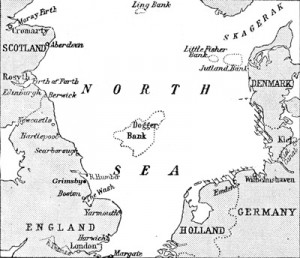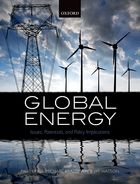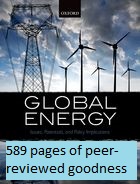Before we had lots of natural gas, nitrogen fertiliser was produced using the Haber-Bosch process. In our low-carbon future, we’ll be making use of it, or something like it, once more. It uses Hydrogen and Nitrogen with energy and an iron catalyst to produce ammonia, which can then form the basis of nitrogen fertilisers. And this process will be of assistance in the move to decarbonise. We can build coastal energy-intensive plants, right on the transmission network, for example at the points where offshore wind farms come ashore, and just operate them when energy is the cheapest. This would help balance demand and supply, at those times when electricity production from wind, wave, tidal and solar energy is highest, and at the same time it helps decarbonise the agriculture sector.
 For a worked example of how much extra energy would be needed by using Hydrogen from renewable sources, rather than from fossil fuels, let’s imagine a plant on the Humber, because I’m from round there, and I’d like to see the money and jobs go there. It’s just to the left of the big “SEA” in North Sea, on the map. It also has the advantage of being one of the places where connections will come ashore from the Dogger Bank wind farms, which is a huge potential offshore wind resource. Furthermore, there’s a lot of water flowing there from the Humber, and much of Lincolnshire and East Anglia is arable land, a major consumer of fertiliser, so siting fertiliser production here will minimise the distance that the product has to travel, to its end use.
For a worked example of how much extra energy would be needed by using Hydrogen from renewable sources, rather than from fossil fuels, let’s imagine a plant on the Humber, because I’m from round there, and I’d like to see the money and jobs go there. It’s just to the left of the big “SEA” in North Sea, on the map. It also has the advantage of being one of the places where connections will come ashore from the Dogger Bank wind farms, which is a huge potential offshore wind resource. Furthermore, there’s a lot of water flowing there from the Humber, and much of Lincolnshire and East Anglia is arable land, a major consumer of fertiliser, so siting fertiliser production here will minimise the distance that the product has to travel, to its end use.
In 2007, GB consumption of Nitrogen in fertiliser was 1.015m tonnes of nitrogen, according to table gb3.0 on p39 (PDF p49) of this DEFRA report from 2007.
1.015m tonnes of Nitrogen is in 1.23m tonnes of ammonia, together with 0.22m tonnes of Hydrogen. (ammonia is 3/17ths Hydrogen by weight). That’s not very much. About 20kg of ammonia per person per year, of which just over 3kg is Hydrogen.
That could be extracted from 2m tonnes of water (water is 1/9th Hydrogen by weight), which in volume terms is 200m x 100m x 100m of water. Not quite a drop in the ocean, but at the same time an utterly insignificant amount, relative to British territorial waters. The Humber Estuary has a flow of 234m3/s, according to this DEFRA presentation , which means our Hydrogen could be generated from 15 minutes of flow from the Humber each year, i.e. or one 35,000th of its flow. I don’t think that the North Sea will notice that bit missing.
So how much extra energy would be needed to get this Hydrogen cleanly?
From http://www.nrel.gov/docs/fy06osti/39534.pdf, production of 1kg of Hydrogen requires 39kWh at STP. Efficiency estimates for the electrolysis of water vary between 50-80%: let’s be conservative and take 50%.
So, we need 78kWh to make 1kg of Hydrogen from 9kg of water. So for our 0.22m tonnes (=220m kg) of Hydrogen per year, we need 220m x 78kWh per year, which is 17.2TWh/y. This can be expressed equivalently as 2GW, 0.8kWh per person per day, about 5% of our current electricity consumption, 4% of our potential onshore wind resource, or 0.1% of our offshore wind resource.
To Come:
Sourced figures on current GHG emissions from Nitrogen fertiliser production

